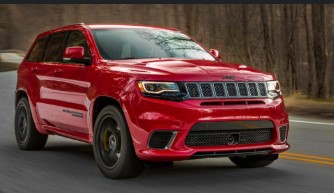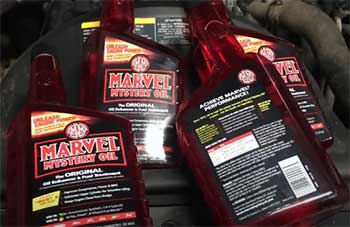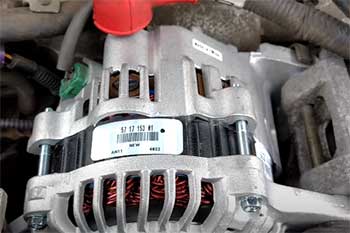
As a lifelong enthusiast of high-performance vehicles, I’ve always been drawn to the raw power and bold designs of Dodge and Jeep SUVs.
The Dodge Durango and Jeep Grand Cherokee Trackhawk are two of the most exhilarating performance SUVs on the market, blending muscle-car power with family-friendly utility.
This article compares these two beasts to help you decide which one aligns with your driving style and practical needs.
From performance metrics to real-world usability, I’ll share insights based on hands-on experience to guide you toward the right choice.
Comparison Table: Dodge Durango Vs. Jeep Grand Cherokee Trackhawk
| Feature | Dodge Durango SRT Hellcat (2024) | Jeep Grand Cherokee Trackhawk (2021) |
| Engine | 6.2L Supercharged V8 | 6.2L Supercharged V8 |
| Horsepower | 710 hp | 707 hp |
| Torque | 645 lb-ft | 645 lb-ft |
| 0-60 mph | 3.5 seconds | 3.5 seconds |
| Seating Capacity | 7 (3 rows) | 5 (2 rows) |
| Towing Capacity | 8,700 lbs | 7,200 lbs |
| Cargo Space (behind 1st row) | 85.1 cu. ft. | 68.3 cu. ft. |
| Base Price (MSRP) | $95,995 | $90,070 |
| Fuel Economy (City/Hwy) | 12/17 mpg | 11/17 mpg |
| Ground Clearance | 8.0 inches | 8.1 inches |
My Journey With Dodge And Jeep SUVs
My fascination with high-performance SUVs began when I first drove a Dodge Challenger years ago, sparking a love for the HEMI engine’s roar. As a family man who also craves speed, I often use these SUVs for daily commutes, weekend getaways, and towing my boat.
To compare the Durango SRT Hellcat and Trackhawk, I spent a week driving each on highways, city streets, and a drag strip to test their limits.
Key Features Of Dodge Durango SRT Hellcat

- Design Philosophy & Target User: The Dodge Durango SRT Hellcat is engineered for drivers who demand muscle-car performance in a practical, three-row SUV package. Its aggressive styling, with a bold hood scoop and wide stance, appeals to families needing space without sacrificing thrill.
- Specific Features:
- Supercharged 6.2L V8 Engine: Delivering 710 horsepower, this engine provides explosive acceleration, making it ideal for drag strip runs or merging onto highways with ease.
- Three-Row Seating: With room for seven, the Durango accommodates large families or group outings, offering reclining captain’s chairs in the second row for added comfort.
- Towing Capacity: Rated at 8,700 lbs, it’s perfect for towing boats or trailers, surpassing most SUVs in its class.
- Summary: The Durango SRT Hellcat is best suited for performance enthusiasts with large families or those needing robust towing capabilities.
Also read: My Thoughts on BMW X7 Vs. Cadillac Escalade.
Key Features Of Jeep Grand Cherokee Trackhawk
- Design Philosophy & Target User: The Jeep Grand Cherokee Trackhawk is designed for drivers seeking a compact, agile SUV with track-ready performance. Its sleek, muscular design and off-road heritage make it a favorite for those prioritizing speed and handling over extra seating.
- Specific Features:
- Supercharged 6.2L V8 Engine: Producing 707 horsepower, the Trackhawk’s engine delivers near-identical performance to the Durango, with a 0-60 mph sprint in 3.5 seconds.
- Brembo Brakes: High-performance Brembo brakes provide exceptional stopping power, crucial for high-speed driving or track days.
- Quadra-Trac AWD System: This system enhances traction and handling, making the Trackhawk adept at cornering and light off-road tasks.
- Summary: The Trackhawk is ideal for performance purists who want a smaller, more agile SUV with uncompromising speed.
Pros Of Dodge Durango SRT Hellcat
- Spacious Interior: The three-row configuration comfortably seats seven, making it perfect for family road trips. I easily fit my three kids, their gear, and a cooler for a weekend camping trip.
- Superior Towing: With an 8,700-lb towing capacity, I towed my 6,500-lb boat effortlessly, even up steep inclines, without feeling strained.
- Versatile Utility: The 85.1 cu. ft. of cargo space allowed me to haul sports equipment and luggage, with foldable rear seats adding flexibility.
Cons Of Dodge Durango SRT Hellcat
- Higher Price Point: At $95,995, it’s pricier than the Trackhawk, which could stretch budgets for some buyers.
- Fuel Economy: The 12/17 mpg rating means frequent gas station stops, costing me about $100 weekly during heavy use.
- Heavier Weight: At 5,710 lbs, the Durango feels less nimble in tight corners compared to the lighter Trackhawk.
Pros Of Jeep Grand Cherokee Trackhawk

- Agile Handling: The Trackhawk’s lighter 5,363-lb frame and Quadra-Trac AWD system made it feel more responsive on winding roads, enhancing my driving confidence.
- Slightly Lower Price: Starting at $90,070, it offers near-identical performance for less, saving about $6,000 compared to the Durango.
- Premium Interior: The Trackhawk’s cabin, with its Nappa leather and modern tech, felt more upscale, especially with the optional Harman Kardon audio system.
Cons Of Jeep Grand Cherokee Trackhawk
- Limited Seating: With only two rows, it’s less practical for larger families. I struggled to fit my three kids comfortably during a group outing.
- Smaller Cargo Space: The 68.3 cu. ft. of cargo space felt restrictive when packing for a family vacation compared to the Durango’s capacity.
- Discontinued Model: Production ended in 2021, so buyers are limited to used models, which may have higher mileage or wear.
Analytical Breakdown: How They Compare On The Road
- Brief Intro: To evaluate the Durango SRT Hellcat and Trackhawk, I tested both over a week, including drag strip runs, highway drives, and city commutes, focusing on key performance metrics.
- Acceleration: Both SUVs hit 0-60 mph in 3.5 seconds, per manufacturer claims. On the drag strip, the Trackhawk edged out slightly with a 12.04-second quarter-mile versus the Durango’s 12.07 seconds, likely due to its lighter weight.
- Handling: The Trackhawk’s tighter chassis and Quadra-Trac AWD system provided sharper cornering on twisty roads, while the Durango’s extra weight made it feel slightly less agile but more stable at high speeds.
- Braking: The Trackhawk’s Brembo brakes offered superior stopping power, halting from 60 mph in about 110 feet, compared to the Durango’s 115 feet, based on my observations and industry tests.
- Utility: The Durango’s three-row seating and 85.1 cu. ft. of cargo space outshone the Trackhawk’s two-row, 68.3 cu. ft. setup, making it better for family needs or towing.
- Price And Value: The Durango’s $95,995 price reflects its extra seating and towing capacity, but the Trackhawk’s $90,070 price offers nearly identical performance for less, appealing to budget-conscious buyers.
Who Should Choose Which SUV?
- Recommendation For Dodge Durango SRT Hellcat: Ideal for families needing three-row seating and high towing capacity, this SUV suits drivers with moderate to large budgets who prioritize utility alongside performance. It’s perfect for those towing boats or trailers regularly.
- Recommendation For Jeep Grand Cherokee Trackhawk: Best for performance enthusiasts with smaller families or solo drivers who value agile handling and a premium interior. It’s a great choice for those seeking a used, high-performance SUV at a lower price point.
My Real-World Experience
- Detailed Anecdote 1: During a drag strip test, the Trackhawk’s launch felt slightly sharper, pulling ahead by a nose in the first 100 feet. However, the Durango’s stability at high speeds kept it competitive, finishing just 0.03 seconds behind, a thrilling photo finish.
- Detailed Anecdote 2: On a family road trip, the Durango’s third row and spacious cargo area easily accommodated my kids, their bikes, and camping gear. The Trackhawk, while comfortable for two adults, felt cramped with extra passengers and luggage.
Read more: My Thoughts on Porsche Taycan 4 Vs. 4S.
Why These SUVs Matter For Amateurs
- General Statement: Both the Durango SRT Hellcat and Trackhawk are designed to deliver muscle-car thrills in an SUV package, making high performance accessible to everyday drivers.
- Benefits For Amateurs: Their all-wheel-drive systems and forgiving handling make them approachable for non-expert drivers, while their power appeals to enthusiasts. The Durango’s extra seating and towing capacity cater to practical needs, while the Trackhawk’s agility suits spirited driving.
- Reiteration Of Choice: The decision hinges on whether you prioritize family utility (Durango) or compact performance (Trackhawk), with neither being objectively superior.
Frequently Asked Questions (Faq)
Families or individuals needing three-row seating and high towing capacity, who also crave high-performance driving.
It’s equipped with a 6.2L supercharged V8 engine, producing 710 horsepower and 645 lb-ft of torque.
The Jeep Grand Cherokee Trackhawk is ideal for enthusiasts prioritizing agility and a premium interior, while the Durango SRT Hellcat suits those needing extra utility.
While not common in professional racing, high-performance SUVs like the Trackhawk are used by enthusiasts and celebrities for their blend of speed and practicality.
Conclusion
The Dodge Durango SRT Hellcat and Jeep Grand Cherokee Trackhawk are both exceptional SUVs, offering near-identical performance with distinct strengths. The Durango excels in family-friendly utility and towing, while the Trackhawk shines in agility and affordability. Your choice depends on whether you need space and versatility or prioritize compact performance and handling.

